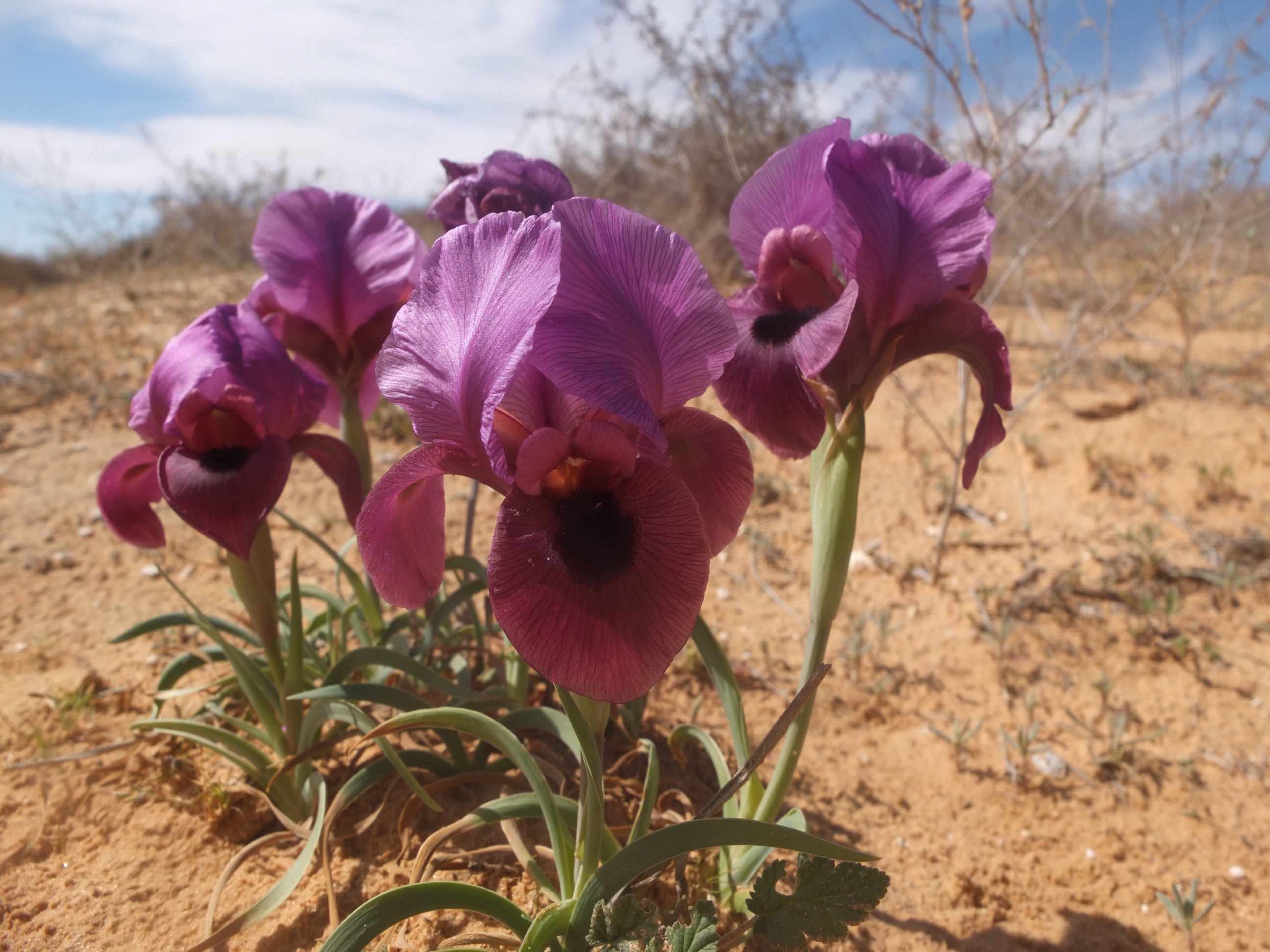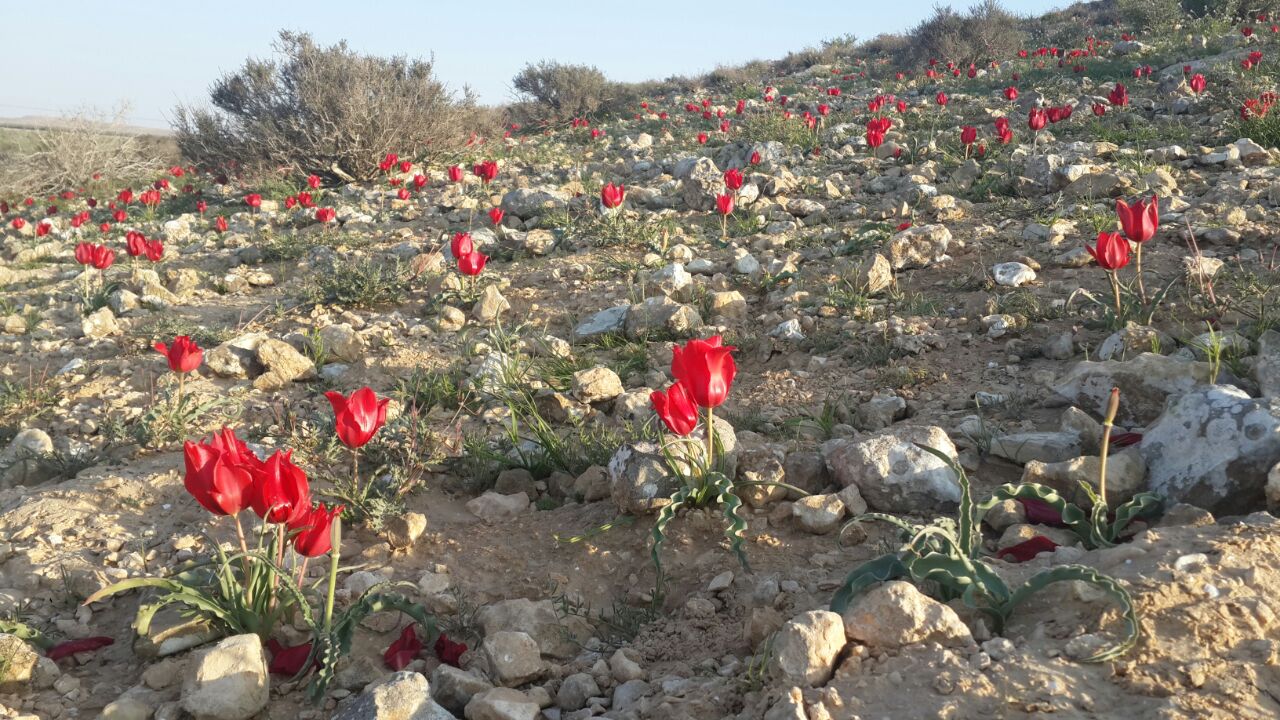Geophytes, glowing hues and geology in the Negev Highlands
- friendsjbg
- Mar 1, 2016
- 3 min read
Updated: May 27
Today we hear from Noach M, another of the UK Friends sponsored interns…
In Hebrew there is a saying, Kol kotz bamidbar hu perach – “Every thorn in the desert is a flower.”
This could be alluding to the first-glance impression of sparse vegetation in a hostile and arid environment. It also says something about human appreciation for plant-life: in the hot dry desert of Israel, plant-loving Israelis find beauty in even the most modest and, in some cases, the prickliest of plants. In fact in Hebrew, native-born Israelis call themselves Sabras, or Opuntia sp.
This week, on an excursion to explore the Negev desert and the early Spring bloomings, we saw not just thorns in the desert, but flowers which, in their own right, would be valued and appreciated for their beauty the world over. The barren environment in which they exist, in contrast to the stunning seasonal floral display, only serves to increase the awe factor.
We started out on the southern coastal plain, still in the Mediterranean region, visiting Humra Hill near Palmachim, and finding impressively flowering clumps of Iris atropurpurea.

Photo: Ori Fragman-Sapir . In the photo, James T, my co-intern admiring iris atropurpurea
We then progressed deeper into the Negev desert, towards the Nizzana border crossing with Egypt. Here we stopped the jeep at the side of an empty desert highway and walked a few metres into the desert. The splotches of purple were thinly spread, but eminently noticeable. Smaller than the atropurpureae, the Iris mariae is brighter and more eye- catching in the yellowish gray of the desert. This iris, unlike others, does not have nectaries, and so it doesn’t rely on hungry pollinators attracted to a free meal. Instead, the flower has compartments, protected by the corolla, that provide ‘accommodation’ to the bees, sheltering them from sun, rain, wind, and predators, while covering them with pollen during their stay.

Iris mariae Photo: James Toole
Ori was excited to find some Muscarii filiforme , a small, bulb with bright blue flowers, near the ‘Machtesh ha gadol’ (the large crater). We dug up some bulbs and they will be entering the nursery as the newest members of our bulb collection!

Muscarii filiforme Photo: Ori Fragman-Sapir
We stopped for lunch on the edge of the crater, one of three geological formations that are unique to the Israeli and Sinai deserts. Unlike impact craters, the machtesh (this kind of crater) were formed because the bedrock was composed of two distinct types of rock: one that was softer and more erodible and one that was harder. Over millions of years, the soft rock dissolved, leaving the harder, heavier rock supporting itself … until it couldn’t. The subsequent collapse left a massive, irregular indentation in the earth, with jagged cliffs along the edge, an infinitely prominent feature of the landscape. On what felt like the highest point of the whole thing, we sat with our legs hanging over the machtesh’s edge, drinking cold water in the heart of the desert.

At the edge of the Machtesh Rimon Photo: Ori Fragman-Sapir
On our way back from the view point, we spotted a single bright red spot on a yellow-gray hill.

Tulipa systola Photo: James Toole
A single Tulipa systola, blooming in full glory, with red petals, yellow anthers, with contrasting black patches. The stem emerged from a twirl of wavy, curly blue leaves. The lone tulip is probably one of the first of the season, a herald that in a week or two, these seemingly barren hills will be covered in bright, beautiful blooms, an extreme reminder of the onset of spring in an extreme environment.

A hillside covered in tulips last year, March 2015. Photo: Noach Marthinsen
Oh yeah. We were in the desert. So there were also camels.

Camels in the Negev Photo: Ori Fragman-Sapir
Look out for more from Noach in future blogs.



Comments